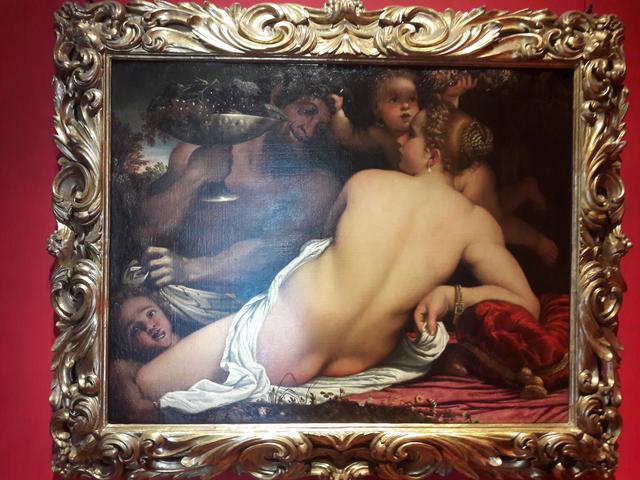Venus y Sátiro con dos cupidos

Venus and Satyr with Two Cupids is a painting by Annibale Carracci. The work is also known as La Baccante.
The canvas was sold in 1620 by a certain Camillo Bolognetti, a Bolognese gentleman, to an emissary of the Grand Duke of Tuscany.
Arriving in Florence, the painting has always remained in the Medici collections, where it was considered worthy of being exhibited in the Tribuna degli Uffizi, a place reserved for the most famous works of the Medici.
In fact, Carracci's Venus appears in Johan Joseph Zoffany's painting depicting this environment: it is in the upper left, next to Guido Reni's Charity and above Raphael's Madonna della Seggiola.
There is no information prior to the sale of 1620, therefore the date of the work is uncertain. However, the strong Venetian influence that characterizes the Uffizi Venus indicates as the most plausible temporal location the end of the ninth decade of the 16th century, when Hannibal had recently stayed in Venice.
Due to the erotic charge that permeates the painting, during the 18th century it was covered with another canvas, used as a screen, which was removed only at the beginning of the 19th century.
Given the explicit sensuality of the painting, due to the nudity of the goddess, whose buttocks are clearly visible in the foreground of the canvas, a clear sexual allusion was found in the work, further underlined by the contrast between the opulent and the pink. The forms of Venus with the brown ones of the satyr, in turn an emblem of the erotic instinct, to which is also associated the offer of a glass of grapes, which is given to the goddess, the Dionysian fruit par excellence.
These are recurring themes in "chamber" paintings, intended for strictly private environments in stately homes and often characterized by themes of erotic content, to the delight of the owner.
Although it is difficult to doubt that the painting also has this value, a moral subtext was captured. It is observed, in fact, that the goddess escapes the satyr's approach and in fact covers herself modestly with a white cloth. But it is above all the action of the two putti that reveals this uplifting aspect.
© Tourblink